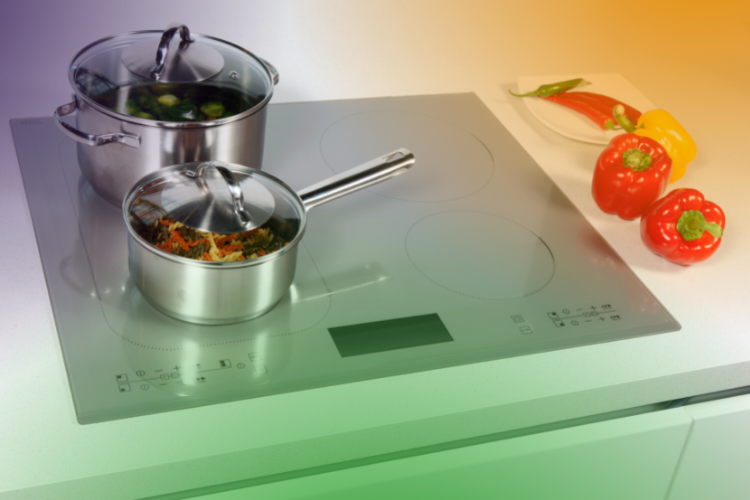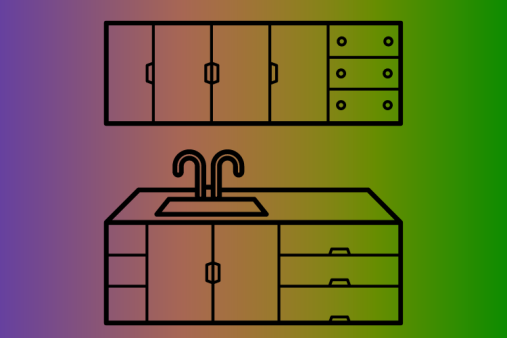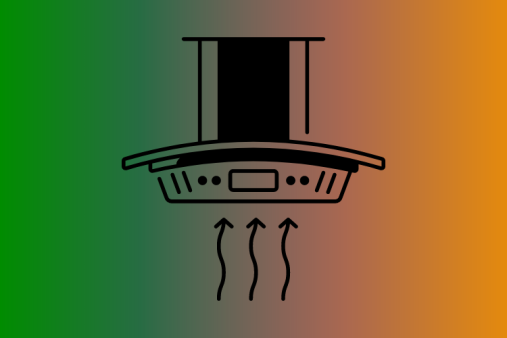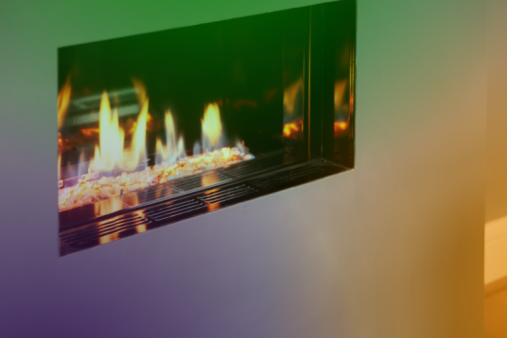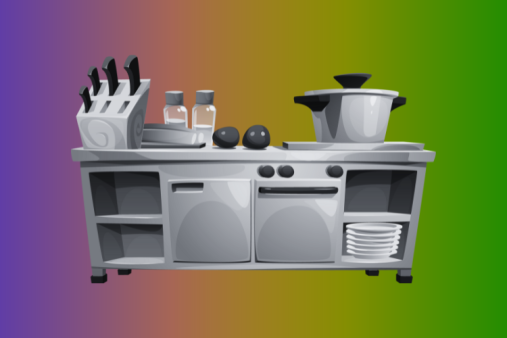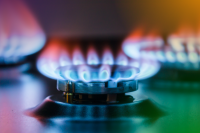Induction Hobs – All You Need to Know (2025 Update)
Induction hobs have rapidly become one of the most popular choices for UK kitchens. Once considered high‑tech and expensive, they are now widely available, energy‑efficient, safer than gas or standard electric hobs, and packed with smart features. Whether you’re planning a kitchen upgrade or choosing your first induction appliance, this guide brings you fully up to date for 2025.
What Is an Induction Hob?
An induction hob uses electromagnetic induction to heat your pans directly, rather than heating the hob surface. Under each cooking zone is a copper coil that creates a magnetic field when switched on.
When a suitable pan is placed on the surface, the magnetic field induces electrical currents in the pan base, which generates heat.
Key benefits:
- Heat goes straight into the pan, not the glass surface.
- Faster cooking – water can boil in half the time of a standard electric hob.
- Highly energy-efficient (up to 90% efficiency, compared to ~55% for gas).
How Do Induction Hobs Work? (Simple Explanation)
- You turn on the hob.
- A magnetic field is generated beneath the glass.
- When an induction‑compatible pan sits on the zone, the magnetic field excites the metal in the pan.
- The pan heats up directly, cooking your food.
If no pan is detected, no heat is produced, making induction one of the safest cooking methods available.
Do I Need Special Pans for Induction?
Yes – induction hobs only work with ferrous (magnetic) materials.
Compatible pans:
- Cast iron
- Carbon steel
- Most modern stainless steel pans (check for magnetic base)
Not compatible:
- Aluminium
- Glass
- Copper (unless they have magnetic bases)
How to check your pans:
- Hold a magnet to the base – if it sticks firmly, the pan is induction-ready.
Good news: Many affordable pan sets are now induction-compatible. Because induction heats pans evenly, they also tend to last longer and avoid hot-spot burning.
Are Induction Hobs Safer? (Yes – and here's why)
Induction is widely considered the safest household cooking method.
Safety advantages:
- Cooler surface: The glass only gets warm from the pan sitting on it.
- Instant shut-off: Zones switch off automatically when the pan is removed.
- Precise temperature control: Reduces the risk of oil overheating.
- Child lock features on most models.
- No open flames, no gas leaks.
If you have young children, elderly family members or are simply accident‑prone, induction is a highly practical choice.
Induction Hob Features (2025)
Modern induction hobs have evolved significantly. Common features now include:
- Booster / PowerBoost mode for rapid boiling
- Bridge zones for griddles or large pans
- Pan detection and auto shut‑off
- Touch slider controls
- Timer functions for each zone
- Residual heat indicators
- Smart connectivity (WiFi control in premium models)
- Keep-warm settings
- Hob‑to‑hood connection that automatically controls your extractor fan
Premium models also offer flexible cooking surfaces, allowing the entire surface to function as a single zone.
Cost of Induction Hobs in 2025
Prices have become far more affordable in the UK.
Typical price ranges:
- Basic 4‑zone induction hob: £180–£400
- Mid‑range models: £400–£800
- Premium / smart models: £900–£2,000+
- Range cookers with induction tops: £1,200–£3,000+
Brands like Hisense, Bosch, AEG, Neff, Samsung and Beko now offer reliable induction hobs at various price points.
Installation Costs & Requirements
Induction hobs are not DIY installs and must be fitted by a qualified electrician.
Why?
- They require a dedicated high‑amperage circuit.
- Many need 6mm or 10mm heat‑resistant cable.
- Incorrect installation can trip your RCD, damage wiring, or void warranty.
Installation cost (2025):
- £80–£150 for a straightforward swap
- £150–£300 if new wiring or consumer unit upgrades are required
Always obtain quotes from certified electricians.
Running Costs: Are Induction Hobs Cheaper to Run?
Induction is one of the most energy‑efficient cooking technologies.
Energy efficiency breakdown:
- Induction: ~90% of energy goes into heating food
- Standard electric ceramic: ~65%
- Gas: ~40–55%
Average yearly savings:
For a typical family cooking daily, switching from electric ceramic to induction may save £10–£25 per year.
Savings aren’t huge, but efficiency and speed are major benefits.
Pros & Cons of Induction Hobs (2025)
Pros
- Extremely fast heating
- Very safe (cool surface, auto shut‑off)
- Energy-efficient
- Easy to clean (flat glass surface)
- Precise temperature control
- Modern features and smart connectivity
Cons
- Requires compatible pans
- Glass surface can scratch
- Clicking/buzzing noises at high power
- Professional installation required
- Can be more expensive upfront than gas
Induction vs Gas vs Ceramic: Comparison Table (2025)
|
|
|
|
|
|
|
|
|
|
|
|
|
|
|
|
|
|
|
|
|
|
|
|
|
|
|
|
|
|
|
|
|
|
|
|
|
|
|
|
|
|
|
|
|
|
|
|
|
|
|
|
|
|
|
Induction Hob Buyer’s Checklist (2025)
Before purchasing an induction hob, run through this quick checklist to make sure you choose the right model for your kitchen and cooking habits.
✔️ 1. Check your kitchen’s electrical capacity
- Do you have a dedicated high-amperage circuit?
- Will you need consumer unit upgrades? (Ask your electrician.)
- Ensure you have the correct cable size (usually 6mm or 10mm).
✔️ 2. Choose the right size and number of zones
- 60cm hobs = standard 4 zones
- 70–80cm = 4–5 zones with more space
- 90cm+ = 5–6 zones or flexible cooking areas
- Consider pan sizes and how often you cook multiple dishes.
✔️ 3. Decide on features that matter to you
- PowerBoost for rapid boiling
- Bridge zones for griddles and large pans
- Timer for each zone
- Pause function for spills and interruptions
- Auto shut-off
- Smart features: WiFi, app control, hob-to-hood connectivity
✔️ 4. Surface durability and finish
- Toughened ceramic glass is standard
- Anti-scratch and anti-fingerprint coatings available on premium models
✔️ 5. Noise level
- Some hobs and pans produce humming/buzzing—check reviews if you're sensitive to noise.
✔️ 6. Check compatibility with your cookware
- Test your existing pans with a magnet
- Budget for new induction-ready pans if needed
✔️ 7. Think about layout and usability
- Touch controls vs slider controls
- Central vs side control placement
- Are zones spaced well for your pot sizes?
✔️ 8. Ventilation considerations
- If choosing a vented induction hob (hob with built-in extractor), check ducting requirements.
- For standard models, ensure you have suitable cooker hood extraction or recirculating filters.
✔️ 9. Warranty and brand reliability
- Look for 2–5 year warranties
- Reliable brands: Bosch, Neff, AEG, Siemens, Samsung, Beko, Hisense
- Check repair availability and parts costs
✔️ 10. Your budget
- Basic: £180–£400
- Mid-range: £400–£800
- Premium / smart: £900–£2,000+
- Installation: £80–£300 depending on wiring
FAQs: Induction Hobs (2025)
1. Do induction hobs make noise?
Yes – you may hear a faint buzzing, humming or clicking at higher power settings. This is normal and varies by pan type.
2. Does an induction hob raise my electricity bill?
Induction uses electricity but is highly efficient. Most households won’t see a noticeable increase.
3. Can induction hobs scratch?
Yes. Use soft-bottomed pans and lift pans rather than sliding to prevent scratches.
4. Do induction hobs interfere with pacemakers?
Modern induction hobs are generally safe, but people with pacemakers should consult their doctor or device manufacturer.
5. Can I use a wok on an induction hob?
Yes, as long as it has a flat magnetic base. Some premium hobs support round-bottom wok cradles.
6. Are induction hobs better than gas?
In many cases, yes. They are faster, more efficient, safer and easier to clean. Gas still offers a visible flame and better control for certain cooking styles.
7. What happens if I accidentally leave an induction hob on?
Nothing will heat unless a pan is present. Most hobs shut off automatically after a period of inactivity.
8. Do induction hobs need ventilation?
Not legally, but good ventilation improves air quality. Many hobs integrate with smart extractors.
9. Can I plug an induction hob into a normal socket?
Only small portable induction hobs. Built‑in models require hardwiring by an electrician.
10. How long do induction hobs last?
Good-quality induction hobs typically last 10–15 years or more with proper care.
